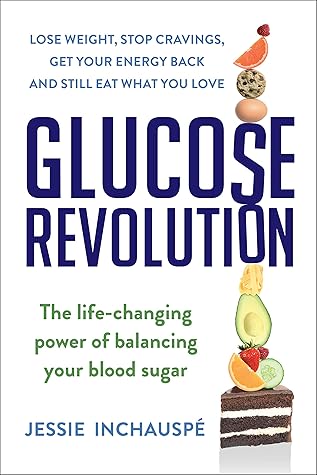Our liver turns glucose into a new form, called glycogen. It’s equivalent to how plants turn glucose into starch. Glycogen is actually the cousin of starch—it’s composed of many glucose molecules attached hand to hand. If excess glucose stayed in its original form, it would cause oxidative stress and glycation. Once transformed, it does no damage. The liver can hold about 100 grams of glucose in glycogen form (the amount of glucose in two large McDonald’s fries). That’s half of the 200 grams of glucose that our body needs for energy per day.
Welcome back. Just a moment while we sign you in to your Goodreads account.


